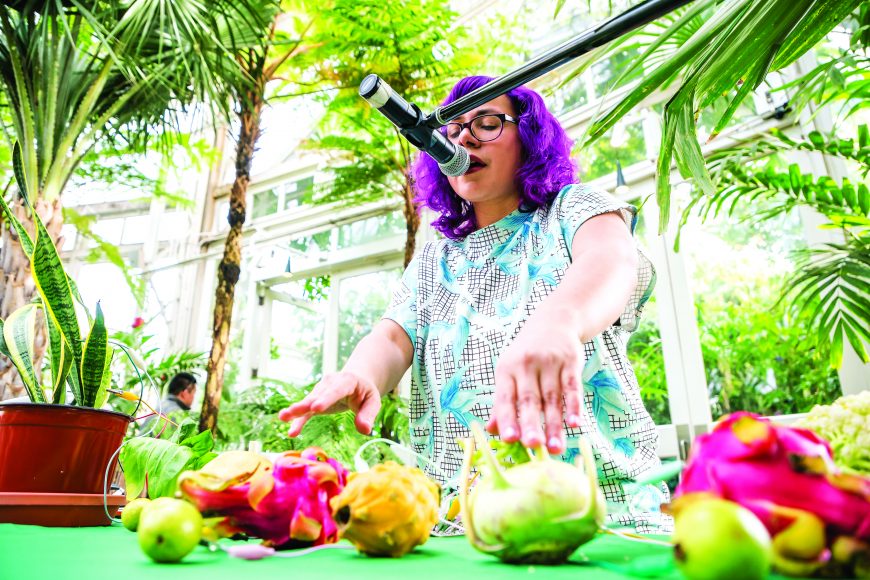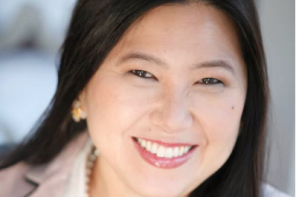Composer Angélica Negrón apologizes for the poor cellphone connection. But you see Midi, her Boston Terrier, just couldn’t resist the sunshine, leading her deeper and deeper into the park near their Brooklyn home, where the reception was less than optimal. Quickly, the pair circled back to their apartment and cell civilization, but not before it became apparent that Midi and his mistress have a good deal in common. Hailing from Puerto Rico, they both revel in nature, particularly the warmth of the sun.
It’s an occupational love as well. As a composer, Negrón uses technology to unlock the music in nature. You’ve heard of the “music of the spheres”? Turns out there’s music in vegetables, too.
“We often think of technology taking us away from nature, but I’m using technology to enhance nature, not take us away from it. …That’s really at the core and the heart of the piece I’m writing, how we’re connected.”
No doubt this is why the New York Botanical Garden in the Bronx selected Negrón as its first composer in residence. The fruits – no pun intended – of that residency will be the November premiere of the tentatively titled “Chorus of the Forest,” showcasing the sounds of NYBG’s Thain Family Forest, a 50-acre old-growth forest that is the largest remaining tract of old-growth trees in New York City. For the performances, Negrón will use four different choruses, including that of Celia Cruz Bronx High School of Music, with electronic sounds created by attaching probes to plant leaves. (The probes measure the electrical currents in the plants that are translated to musical notes.) The audience will experience these in sound vignettes, four to six stations set up throughout the forest. Each listener’s experience will be different, depending on where you start, but a middle station near the Snuff Mill, a wedding venue overlooking the Bronx River, will offer the heart of the composition, which will also feature mechanical chimes and bells that play themselves, created by Nick Yulman.
There will also be a transitional element of tree and insect sounds, recorded by biologist David Haskell, author of “The Forest Unseen.”
“The idea is that this is a really immersive experience,” Negrón says.
As a child in Puerto Rico, she was curious about sounds both natural and manmade. She studied the violin, cello and harp and taught herself how to play the accordion. At the Conservatory of Music of Puerto Rico and the University of Puerto Rico, “I started to investigate other ways to make music,” she says, discovering composition and electronic music. She came across Ototo, “a synthesizer that turns anything that conducts electricity into musical instruments. I can play an apple … just by touching the object.”
Negrón earned a master’s degree in composition at New York University and is working on a doctorate at CUNY Graduate Center. However, that doctorate will have to wait, due to the demands for what WQXR/Q2 called her “wistfully idiosyncratic and contemplative” compositions, which have been heard everywhere from the 2016 New York Philharmonic Biennial to the Tribeca Film Festival.
When she does get back to that thesis, she’ll be exploring the music of the Sarah Lawrence-educated Meredith Monk, a composer who’s also a choreographer, performer and filmmaker. Other influences including her teacher Tania Léon, Björk and Pulitzer Prize winner Caroline Shaw.
“I find I’m listening to music made by women,” she says. “It’s what’s speaking to me most at the moment. There’s an inherent sensibility to their music that connects to me. And they’re also telling stories we don’t often hear in classical music.”
“Chorus of the Forest” will be performed at 1 and 3 p.m. Nov. 2 and 3 at the New York Botanical Garden. For more, visit nybg.org.






